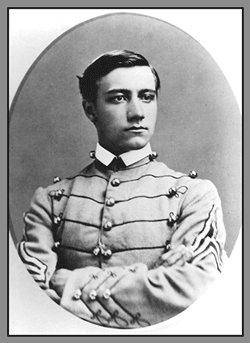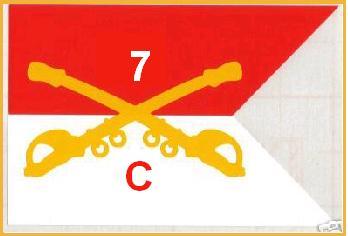|
First Paperback Edition now available! 254 pages, 6" x 9", perfect binding, 60# cream interior
paper, black and white interior ink , 100# white exterior paper. $24.61 plus shipping. View and order here:
http://www.lulu.com/content/235507

This is an animated graphic superimposition demonstrating the similarity of the facial and skeletal geography of
Henry's West Point cadet portrait and the remains currently held in the Smithsonian Institute's Anthropology Department.
Graphic design by Digital Mirrors, visit their online website at: http://www.digitalmirrors.com/.
|
|
Henry Moore Harrington was born April 30, 1849 in Albion, New York. At the age of seven years his parents
moved to Coldwater, Michigan. Henry spent his childhood in Coldwater and after his schooling he accepted an appointment
to West Point in 1868, having turned down a similar appointment to the Naval Academy. Graduating in June 1872, he was
appointed a second lieutenant of cavalry and assigned to the 7th United States Cavalry, serving under the command of Brevet
Major General George Armstrong Custer.
After earning his spurs during the fight at Pompey's Pillar in Montana, and accompanying Custer on the Black
Hills Expedition of 1874, the eager young cavalry officer was ready for more hazardous service.
He sat out in May of 1876 along with the rest of the 7th Cavalry for duty in Yellowstone Country. On June
25th of that year Henry met his fate along with many other soldiers at the "Battle of the Little Big Horn".
For 128 years Henry has been "missing in action", his remains never identified, until now. Forensic science,
new historical research, and the close review of Indian warrior narrative has revealed the location of Henry's remains and
identified him as "The bravest man the Sioux ever fought."
Overlooked by museum curators, what remains of this true American hero has resided for more than
a century in one of the nation's premier institutions of history. Overlooked by historians, his heroic leadership
and actions at the most famous of all Indian War battles have gone unrecognized except by the very Indian warriors he fought.

|




